Su-57 Felon
- Senior member

- Posts: 399
- Joined: 19 Aug 2019, 03:26
milosh wrote:No it isn't like YF-23 it is common mistake because Su-57 main gear is lower so plane is tilted down when on ground and then it look like engines are above intake mouths.
Su-57 intake is like X-32 in therms of stealth design (not stealthy at all):
http://www.aviationexplorer.com/boeing_ ... g_x-32.jpg
So if F-32 is stealth I really don't see why Su-57 isn't if we just talk about intake.
Of course both would need to use radar blocker but here is where Su-57 have "advantage" F-32 because of STOVL couldn't use complex blocker while Sukhoi radar blocker look fraking complex:
https://findpatent.ru/patent/262/2623031.html
It look like combination of couple of radar blockers, first some ring blocker, then mesh and then something similar to S.Hornet radar blocker.
OLS backside is composite with thick RAM so when it isn't in function its impact of RCS is small. When it is in function it increase RCS but not as folks like to calculate, they use metalic sphere as analog
@marsavian
Of course they did analyse lot of different designs, here are F-22 & F-23 combo:
https://naukatehnika.com/files/journal/ ... 47-e-6.jpg
But they decide to go with complex radar blocker. S-duct would reduce capability to carry four big missiles/bombs or two big missiles/bombs and four R-XY (short missile which replace R-77).
Interesting, assuming you are correct the question remains as to how effective the engine shrouds (radar blockers) and sig reduction work on the IRST bulb will prove to be. I have to say I doubt this approach will be competitive with what you see on the front aspect of the F22 or F35 from an RCS reduction point of view.
That said it may not be terribly relevant either. With a projected Russian fleet of under 100 airframes a decade from now, it looks like Flanker and Fulcrum variants will continue to form the backbone of the VVS fighter fleet for a long time to come.
- Elite 5K

- Posts: 5331
- Joined: 20 Mar 2010, 10:26
- Location: Parts Unknown
Algerian SU-57's huh. I'll believe it when I see it.
They're going to find out that for the $, the SU-35 is a much better buy. I can only imagine the maintenance woes on their new SU-57's. There are still many bugs to be worked out, and the final production process will now have to be looked at from the ground up since the crash. I'd bet anything simple engine changes will have to occur in Russia, along with all but the most routine maintenance.
Time will tell..
They're going to find out that for the $, the SU-35 is a much better buy. I can only imagine the maintenance woes on their new SU-57's. There are still many bugs to be worked out, and the final production process will now have to be looked at from the ground up since the crash. I'd bet anything simple engine changes will have to occur in Russia, along with all but the most routine maintenance.
Time will tell..
- Elite 2K

- Posts: 2317
- Joined: 27 Feb 2008, 23:40
- Location: Serbia, Belgrade
marsavian wrote:Milosh, can you point out this radar blocker on the current serial version of Su-57 ?
That is something what officials would know not me.
Btw interesting photo of crashed Su-57:
https://radar.rp.pl/wp-content/uploads/ ... ternet.jpg
They blurred intake.
- Forum Veteran

- Posts: 572
- Joined: 07 Nov 2007, 10:55
mixelflick wrote:They're going to find out that for the $, the SU-35 is a much better buy. I can only imagine the maintenance woes on their new SU-57's. There are still many bugs to be worked out, and the final production process will now have to be looked at from the ground up since the crash. I'd bet anything simple engine changes will have to occur in Russia, along with all but the most routine maintenance.
This is the main reason India is no longer buying Russian combat jets. I can guess that Algeria got a very low price on the jets as nothing else is moving off the lot for Russia right now in the combat jet space.
milosh wrote:marsavian wrote:Milosh, can you point out this radar blocker on the current serial version of Su-57 ?
That is something what officials would know not me.
Btw interesting photo of crashed Su-57:
https://radar.rp.pl/wp-content/uploads/ ... ternet.jpg
They blurred intake.
That's because the blocker only exists as a patent certainly in the current serial version with the -117 engine so my original post and its points still stand, Su-35 type RAM treatment is all it's got and that is frankly not good enough for a supposedly VLO aircraft which you claimed for it.
Last edited by marsavian on 29 Dec 2019, 14:08, edited 1 time in total.
- Elite 5K

- Posts: 5331
- Joined: 20 Mar 2010, 10:26
- Location: Parts Unknown
talkitron wrote:mixelflick wrote:They're going to find out that for the $, the SU-35 is a much better buy. I can only imagine the maintenance woes on their new SU-57's. There are still many bugs to be worked out, and the final production process will now have to be looked at from the ground up since the crash. I'd bet anything simple engine changes will have to occur in Russia, along with all but the most routine maintenance.
This is the main reason India is no longer buying Russian combat jets. I can guess that Algeria got a very low price on the jets as nothing else is moving off the lot for Russia right now in the combat jet space.
But wait, isn't India getting up-rated MKI's? Perhaps they'll be serviced locally?
In any case, Algeria may have gotten a good price but my God, 3 different types.. and not many of each? That's going to be crazy expensive logistically, and it also won't leave many aircraft to cannibalize for spare parts. Worse, those aircraft have to go back to the Russia for engine overhauls, etc.. They should have bought as many multi-role SU-30SM as reasonable, and put the rest into pilot training. Multi-million dollar aircraft and 10 cent pilots are a bad, bad combination...
- Elite 2K

- Posts: 2546
- Joined: 12 Jan 2014, 19:26
milosh wrote:
OLS backside is composite with thick RAM so when it isn't in function its impact of RCS is small. When it is in function it increase RCS but not as folks like to calculate, they use metalic sphere as analog
RAM can only do so much. I can wrap a brick in RAM but it will never be as effective as a diamond with faceted shallow angles or an oval with shallow complex continuous curves.
From a purely visual perspective it always seems IMO that the PAKFA was always designed to be stealthy enough rather than stealthy as possible...
Take for instance the EOTS of the F-35. Here we see the EOTS housed in a structure desined to be as stealthy as possible as well as having radar absorbent properties.
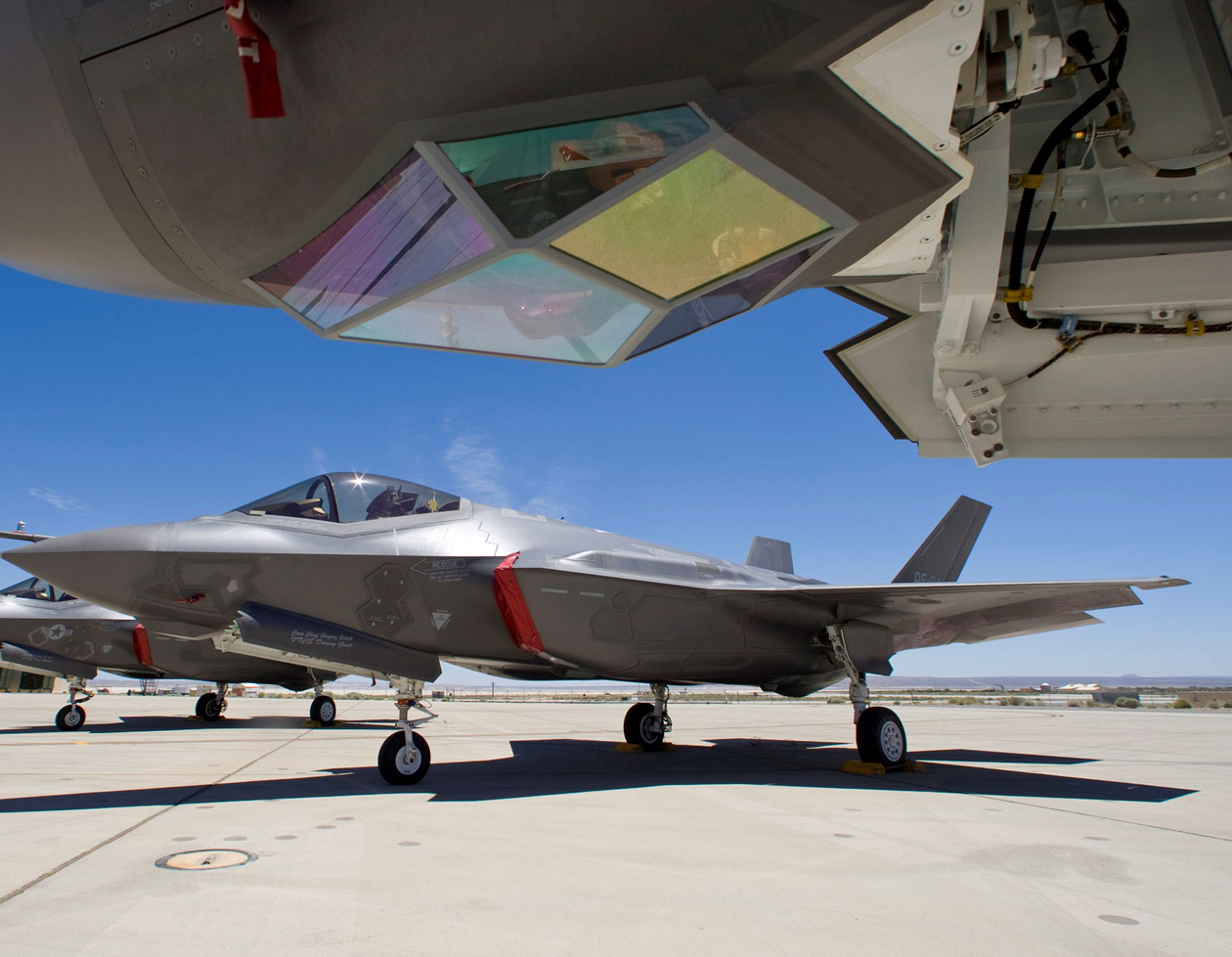
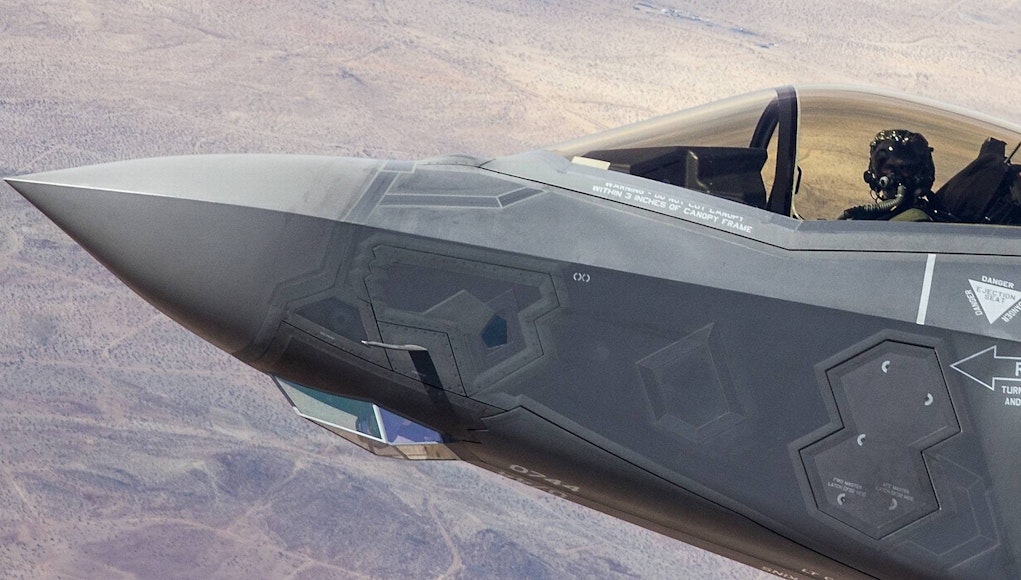
Even the older F-117 tried to be as stealthy as possible. The F-117s IR imaging, nav, and tageting system on the front if the aircraft is housed and recessed. Even the housing is designed to be LO with saw toothed edging to help break radar signals.
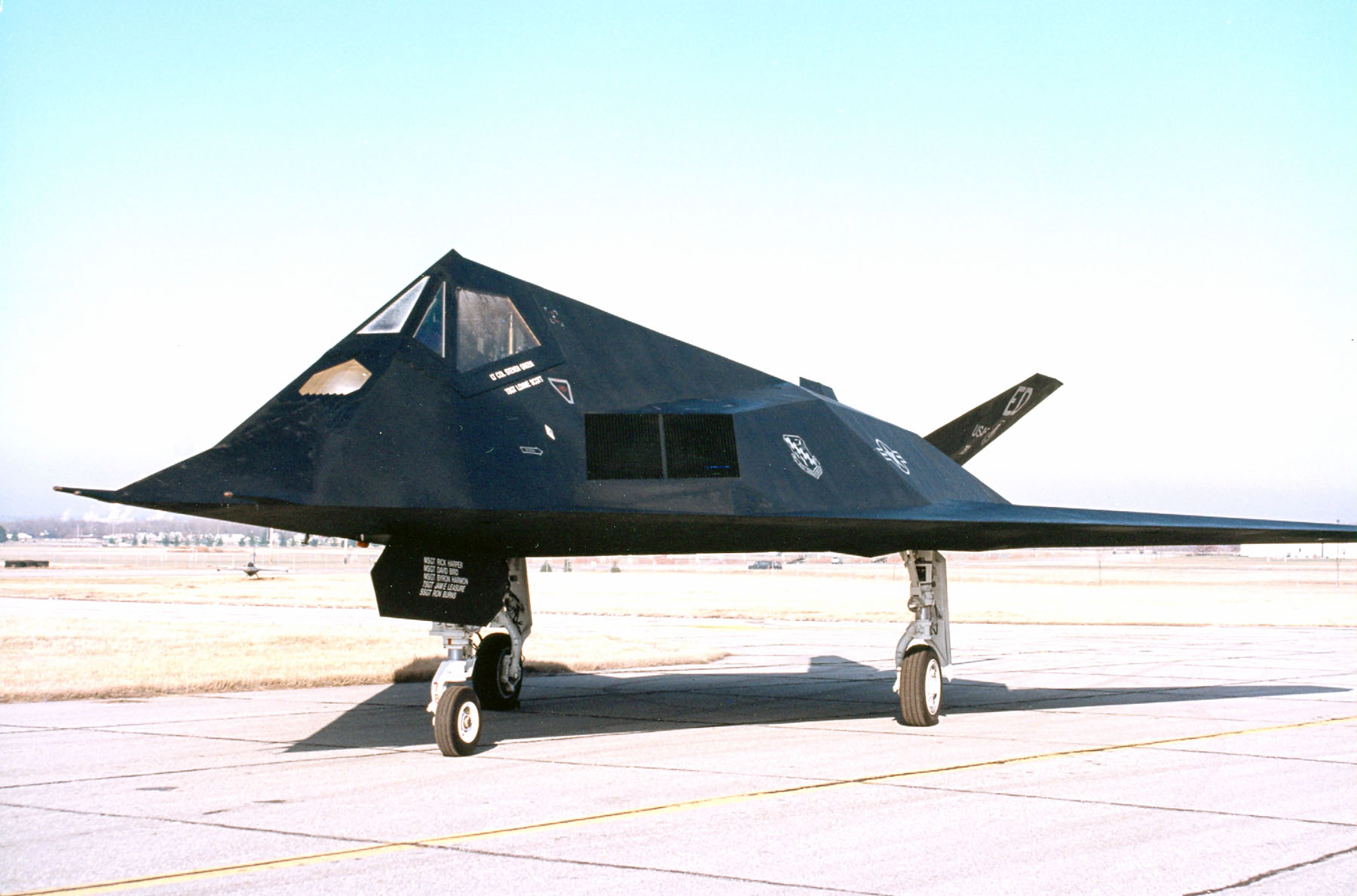
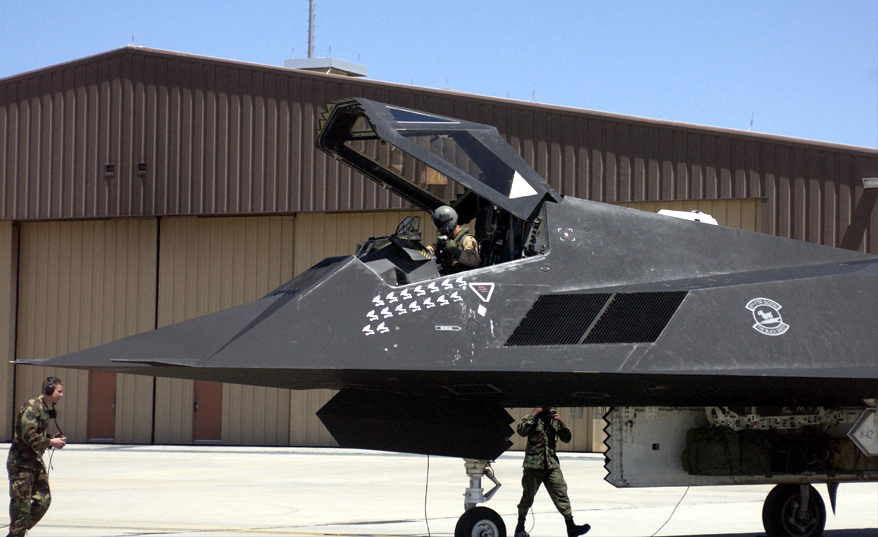

However the same cannot be said about the PAKFAs IRST...

Shaping is a major factor to obtaining optimal low RCS
- Elite 2K

- Posts: 2317
- Joined: 27 Feb 2008, 23:40
- Location: Serbia, Belgrade
mixelflick wrote:But wait, isn't India getting up-rated MKI's? Perhaps they'll be serviced locally?
Yeap. I don't know about engines though in 2007 they didn't have facility for engine maintenance something which Chinese had.
mixelflick wrote:In any case, Algeria may have gotten a good price but my God, 3 different types.. and not many of each? That's going to be crazy expensive logistically, and it also won't leave many aircraft to cannibalize for spare parts. Worse, those aircraft have to go back to the Russia for engine overhauls, etc.. They should have bought as many multi-role SU-30SM as reasonable, and put the rest into pilot training. Multi-million dollar aircraft and 10 cent pilots are a bad, bad combination...
All three types will use same engine in mid 2020s, Type-30 fit well in any Flanker so it isn't just for Su-57. Also you mentioned India, their Super 30 upgrade is based on Su-57 tech for Su-30, so you can expect all three planes in 2020s will have similar electronics.
Also Su-57 doesn't look like chasing best possible RCS so I expect RAM isn't so expensive to maintain, if we look weather and airfields in Russia I doubt they would go with quality RAM even if they can afford it.
- Elite 5K

- Posts: 5331
- Joined: 20 Mar 2010, 10:26
- Location: Parts Unknown
Latest on crash from The Aviationist...
“During a flight test, when the aircraft was being flown at maximum limits, there was a failure of an integrated control system. Reports differ as to whether the aircraft entered a series of uncontrolled rolls or a flat corkscrew. The malfunction began at an altitude of 10 kilometers (32,800 feet). The factory test pilot attempted to recover the aircraft during a descent of 8,000 meters (26,246 feet), but finally ejected at 2,000 meters (6,561 feet). The pilot parachuted successfully and was found an hour after the accident. Temperature at the time of the accident was 30-degrees below zero.”
A quote attributed to the unnamed Sukhoi factory test pilot was shared on Russian language social media that said:
“The stabilizers have risen in extreme opposite positions, began to rotate. Disabled the [automated control system?], switched to manual – no reaction. From 10 km to one and a half was transported – no result. Came out successfully, when landing slightly twisted my leg.”
They also strongly suspect the Algerian "buy" is BS, meant to distract attention from the crash..
https://theaviationist.com/2019/12/29/w ... sh-emerge/
“During a flight test, when the aircraft was being flown at maximum limits, there was a failure of an integrated control system. Reports differ as to whether the aircraft entered a series of uncontrolled rolls or a flat corkscrew. The malfunction began at an altitude of 10 kilometers (32,800 feet). The factory test pilot attempted to recover the aircraft during a descent of 8,000 meters (26,246 feet), but finally ejected at 2,000 meters (6,561 feet). The pilot parachuted successfully and was found an hour after the accident. Temperature at the time of the accident was 30-degrees below zero.”
A quote attributed to the unnamed Sukhoi factory test pilot was shared on Russian language social media that said:
“The stabilizers have risen in extreme opposite positions, began to rotate. Disabled the [automated control system?], switched to manual – no reaction. From 10 km to one and a half was transported – no result. Came out successfully, when landing slightly twisted my leg.”
They also strongly suspect the Algerian "buy" is BS, meant to distract attention from the crash..
https://theaviationist.com/2019/12/29/w ... sh-emerge/
milosh wrote:
Also Su-57 doesn't look like chasing best possible RCS so I expect RAM isn't so expensive to maintain, if we look weather and airfields in Russia I doubt they would go with quality RAM even if they can afford it.
Quality RAM is easier to Maintain.
Youve fallen for the trope that the more sophisticated and advanced the skin is, the more babying it needs. its the opposite.
F-117 maintainers in 1995 would do a backflip if they could see the F-35s skin
Choose Crews
- Elite 5K

- Posts: 5331
- Joined: 20 Mar 2010, 10:26
- Location: Parts Unknown
XanderCrews wrote:milosh wrote:
Also Su-57 doesn't look like chasing best possible RCS so I expect RAM isn't so expensive to maintain, if we look weather and airfields in Russia I doubt they would go with quality RAM even if they can afford it.
Quality RAM is easier to Maintain.
Youve fallen for the trope that the more sophisticated and advanced the skin is, the more babying it needs. its the opposite.
F-117 maintainers in 1995 would do a backflip if they could see the F-35s skin
I wonder if Russian industry can build to sufficient margins (for stealth) if the order is small enough? It's pretty clear they can't mass produce fighters with the extreme tolerances necessary for VLO aircraft. Lockheed pumped out 131 or so F-35's in 2019, and that'll go up to 141 in 2020. So around 11 or so aircraft a month. If the Russians hold true to 76 by 2028, that's less than 1 airframe a month. Call it one every 6 weeks.
If they're more or less making each one by hand (so to speak), is there a likelihood those extreme tolerances necessary for stealth could be achieved?
- Elite 2K

- Posts: 2317
- Joined: 27 Feb 2008, 23:40
- Location: Serbia, Belgrade
mixelflick wrote:If they're more or less making each one by hand (so to speak), is there a likelihood those extreme tolerances necessary for stealth could be achieved?
Yes it is possible, F-117 is build by hand and F-22 didn't had production rate nowhere near F-35 so it use lot less automation then F-35.
@XanderCrews
You are talking about fibermat which is used on F-35. F-22, B-2 and F-117 use more sensitive RAM. I doubt Russia is capable to make fibermat. So they will use more sensitive RAM so I expect they will choice more rugged and less efficient RAM.
Future Of Su-57 Next-Generation Engine Uncertain
https://aviationweek.com/defense-space/ ... -uncertain
https://aviationweek.com/defense-space/ ... -uncertain
Piotr Butowski January 06, 2020
GDANSK, Poland—As new details about a next-generation engine for Russia’s premier Su-57 fighter emerge, new concerns are apparent as well.
On Dec. 6, the head of Rostec Corp.’s aviation cluster, Anatoly Serdyukov, provided an update on the state of work on the new-generation Lyulka “izdeliye 30” (product 30) turbofan engine intended for the final modification of the Su-57 fighter, the so-called “second-stage” aircraft. Su-57 fighters currently fly with Lyulka AL-41F-1 (izdeliye 117) engines.
Izdeliye 30 is the first all-new engine for tactical combat aircraft developed in Russia for several decades. The previous Lyulka AL-31F engine entered production together with the Su-27 Flanker fighter in 1981. All subsequent engines, including the AL-41F-1 for the first Su-57s, are upgrades of the base AL-31F.
The clean-sheet design offers a thrust increase, lighter weight, a smaller number of elements and lower operating costs. In December 2014, Russia’s United Engine Corp. CEO Vladislav Masalov said the new engine will be “17-18% more effective” than the current one. If this refers to full thrust, the new izdeliye 30 should provide 17 tons compared to 14.5 tons for AL-41F-1. The engine’s thrust-to-weight ratio is to be more than 10:1.
Thanks to glass-fiber plastic inlet guide vanes, the new engine fan would reduce the radar cross section in a front view.
“Bench tests of the future engine are being continued. The engine optimization on a flying testbed is being conducted,” Serdyukov said. “In October, another flight was executed aimed at checking the engine characteristics at various flight modes. Operation of the thrust-vectoring nozzle was checked, as well as operation of the oil system at negative G loads. In total, the flying testbed executed 16 flights.”
The flying engine testbed, the Su-57’s second prototype T-50-2LL, replaced the port engine with a prototype of the izdeliye 30. It performed the first flight on Dec. 5, 2017.
But 16 test flights in two years is not an impressive test pace, especially considering how important this engine is for the Russians.
Serdyukov concluded his remarks with the following: “The issue of the use of this engine on airplanes is currently under consideration.” This statement suggests that it is not yet assured that the Su-57 will receive the new engines in the foreseeable future.
Though there is no official information on the topic, the next-generation engine program faces serious obstacles. The main one is the lack of modern materials that would enable the planned engine characteristics. Replacing planned materials with those that are available is likely to adversely affect the engine’s weight and performance.
The first series-production Su-57 fighter was to be handed over to the Russian Defense Ministry in December 2019, but it crashed Dec. 24 during a handover flight in Komsomolsk-on-Amur. In total, the ministry ordered 74 Su-57s—the first two aircraft for testing and then six operational squadrons of 12 fighters each—with delivery by the end of 2027.
During the Army 2018 exhibition, Deputy Defense Minister Alexey Krivoruchko claimed that from 2023 the Su-57s will be delivered in a “second-stage” configuration, with the new engines. But in a statement to the Russian Defense Ministry newspaper Krasnaya Zvezda in December 2019, Krivoruchko corrected this deadline: Deliveries of the first-stage aircraft will last until the “mid-2020s.”
Who is online
Users browsing this forum: No registered users and 7 guests

